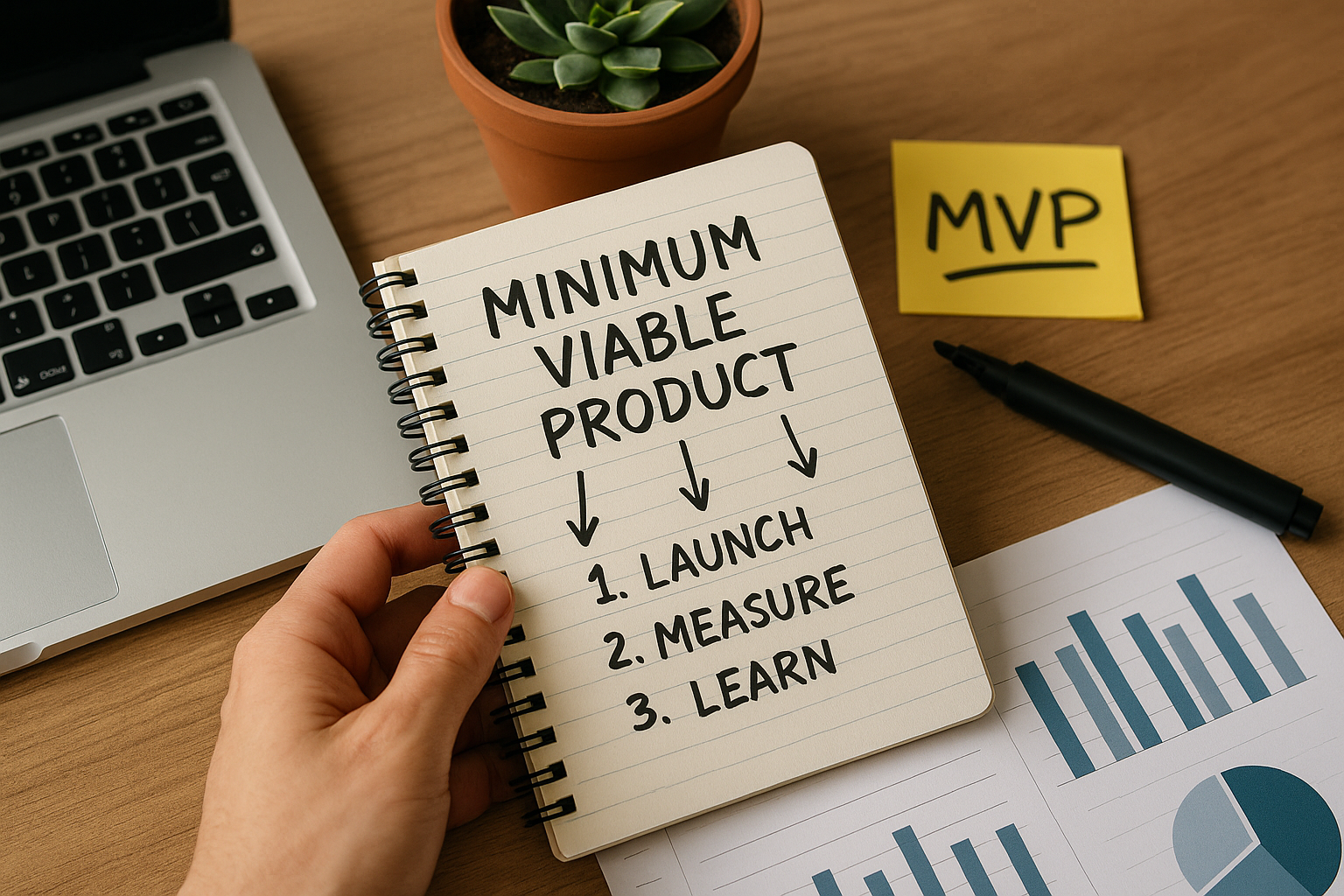When launching a new business, it’s tempting to want everything perfect before going public. But spending too much time and money on a product without real customer validation is risky. That’s where the Minimum Viable Product (MVP) comes in.
An MVP helps you test your business idea with minimal resources while collecting valuable feedback from real users. Let’s break down exactly what it is, why it matters, and how you can create one—even if you’re just starting out.
What Is a Minimum Viable Product (MVP)?
An MVP is the simplest version of your product or service that still solves a real problem for your target audience. It contains only the core features needed to be usable and testable.
The goal of an MVP is not to make money immediately or impress with fancy features. It’s to:
- Validate your idea in the real world
- Learn what users actually want
- Avoid wasting time and money on unnecessary development
Why New Entrepreneurs Should Use MVPs
Building a full product without feedback is like trying to hit a target blindfolded. MVPs offer huge benefits for beginners:
- Faster launch: You can get to market in weeks, not months.
- Lower costs: You only build what’s essential.
- Early feedback: Users help shape the product through real-world use.
- Risk reduction: You avoid investing heavily in the wrong idea.
- More confidence: You’ll feel validated when people use (and pay for) what you offer.
Real-Life Examples of MVPs
Many of today’s most successful companies started as MVPs:
- Airbnb: Started with a basic website offering a few air mattresses in a living room.
- Dropbox: Released a short demo video before building the actual product.
- Zappos: Founder took pictures of shoes in stores and posted them online to test demand.
- Instagram: Launched with just one core feature—photo sharing.
These examples show that simplicity can lead to massive growth when done right.
Types of MVPs You Can Build
You don’t need to be a tech expert to create an MVP. Here are common formats:
1. Landing Page MVP
Create a basic website explaining your product idea. Add a signup form or “Buy Now” button to measure interest.
Best for: Testing demand for digital products, services, or apps.
2. Prototype or Mockup
Use design tools like Figma or Canva to create visuals that simulate how your product will work.
Best for: Getting feedback on the look and flow before building anything.
3. Manual Service (“Concierge MVP”)
Do the work yourself behind the scenes instead of automating it. For example, manually send email reports instead of building a system to do it.
Best for: Service businesses or apps requiring logic but not automation yet.
4. Explainer Video
Create a simple video demonstrating your product idea and asking for signups or feedback.
Best for: Tech products or apps where features are harder to describe in text.
5. No-Code MVP
Use tools like Carrd, Airtable, Notion, or Webflow to build a usable version without coding.
Best for: Entrepreneurs who want a functional product but aren’t developers.
How to Build Your First MVP (Step-by-Step)
Step 1: Identify the Core Problem
What’s the main pain point your product solves? Focus only on the one thing your target audience truly needs.
Step 2: Define Your Core Feature(s)
What’s the minimum functionality required for the product to solve that problem? Eliminate anything extra.
Step 3: Choose the Right MVP Type
Based on your skills, time, and budget, decide whether to make a landing page, video, manual service, or prototype.
Step 4: Build and Launch
Use free or low-cost tools to put it together. Keep it simple and usable.
Step 5: Get Feedback
Show it to real users. Ask:
- Would you use this regularly?
- What do you like or dislike?
- What’s missing or unnecessary?
- Would you pay for this?
Step 6: Iterate Based on Feedback
Use what you learn to improve or pivot your idea. Then relaunch and test again.
Common MVP Mistakes to Avoid
- Building too much: Focus only on the essential feature.
- Waiting too long: Perfection is the enemy of progress.
- Ignoring feedback: You’re not building for yourself—listen to your users.
- Choosing the wrong audience: Make sure you’re testing with the right people.
Final Thoughts: Start Small, Learn Fast
Your MVP doesn’t need to be beautiful or perfect. It just needs to solve a real problem in a simple way. Once you’ve validated your idea, you can confidently build a better version—knowing people want it.
Think of your MVP as your learning tool, not your final product. The sooner you launch and collect feedback, the faster you’ll build something that truly works.
